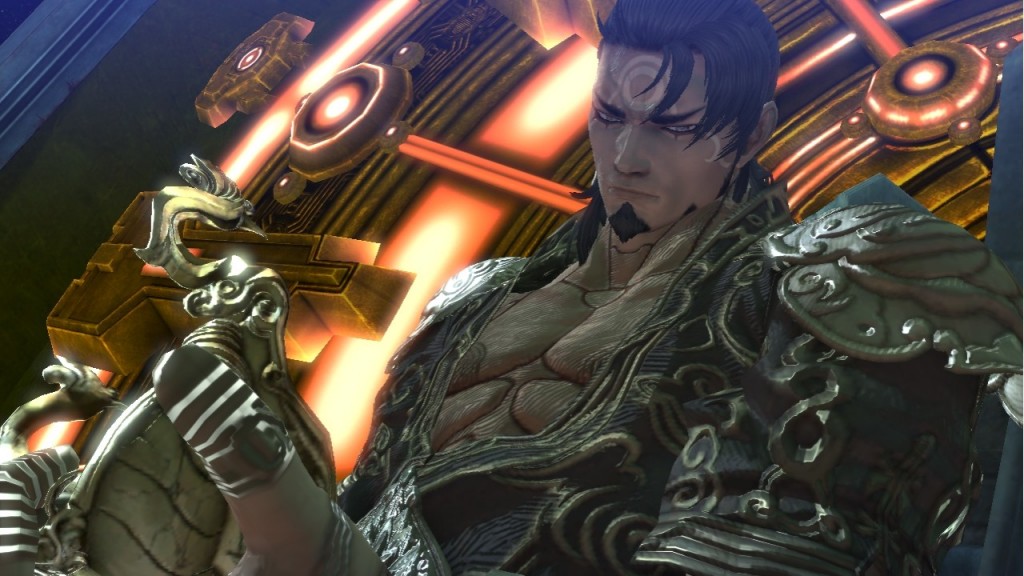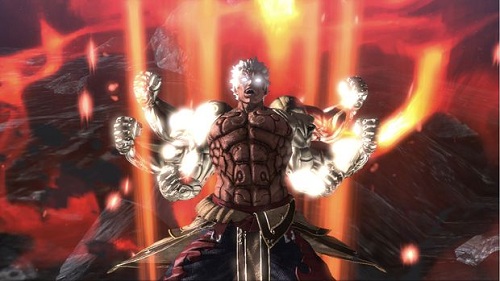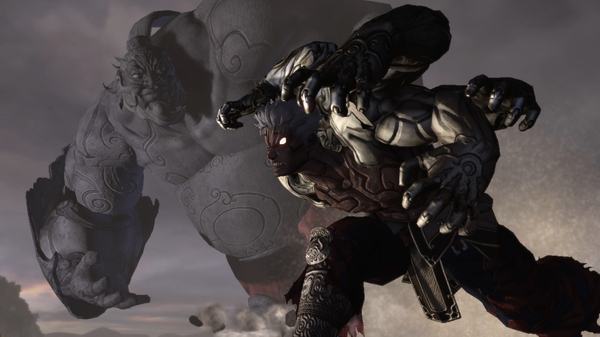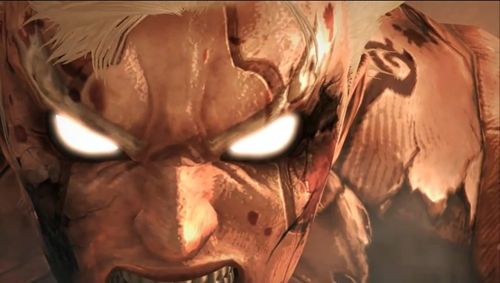Asura’s Wrath
Publisher: Capcom
Developer: CyberConnect2
Platforms: PlayStation 3, Xbox 360 (Reviewed)
Release Date: February 21, 2012
Price: $59.99 – Available Here
Overview
Developing video games that incorporate originality and do not include gimmicks can be a hard task to accomplish. Making that task much harder is that the majority of people who play video games like their old standby games and often have trouble accepting new and different video game concepts. Thankfully, ever so often, a developer dares to try something different and a publisher accepts the risk, knowing that although a new type of game might not sell as well as Call of Duty, it might pay off down the line.
CyberConnnect 2 and Capcom have produced such a game. They brazenly created a game that is hardly a game at all. Did their risk pay off? Will it open up new trains of thought in the video game community? Or does it fail miserably, destined to be resigned to a fate of bargain bins and ill-conceived laughter?
Story
Asura’s Wrath tells a grand story of a father, striving to rescue his daughter. A story which casts gods as conflicted beings, trying to do right, but acting wrongly. Outlandish beings, astonishing turns of fortune and incredible powers are at the forefront of the story. Moral quandaries and emotional battles are also included. All of these pieces come together to form a plot that is touching, action packed and incredible.
Unfortunately, the story is also riddled with plot holes, inconsistencies and lack of detail. In addition, ludicrous imagination is often required to comprehend how what is happening is even possible. For example, at one point, a character becomes as large as a planet. He then proceeds to stick his finger through the atmosphere and attempt to crush another character, who is human sized. However, the victim of this attack is able to punch the enormous finger and blow up the attacker.
How mortality is portrayed creates another example of the inconsistencies that plague Asura’s Wrath. One character, who is a demigod, is able to to seemingly resurrect himself when defeated. However, when he overcomes other demigods, the story indicates that these demigods cease to exist. How come some these immortals die and some die?
While I understand that many, many stories require fantastic imagination and filling in of seeming incompatibilities by the partaker, Asura’s Wrath requires so much that it makes it hard to appreciate the story as a whole. All in all though, I enjoyed the more down to earth parts, and I also had fun watching the unusal parts because they were animated so beautifully, and the creativity displayed in each one was incredible. Moreover, Cyber Connect used sweeping cutscenes to craft a cinematic experience that made the game more like watching an anime movie than playing a video game.
Gameplay
Regrettably, the amazing cinematic content came at the cost of gameplay. While most games have a proportion of approximately 20% cutscenes and 80% gameplay, Asura’s Wrath is about 70% cutscenes and 30% gameplay. And when gameplay does rear its head, it is quite simplistic. You’ll encounter various insane creatures and must fight them using 4 basic combat techniques. If you are flying in space, which you often do, combat is simplified even further, requiring you only to dodge and shoot bullets at auto-targeted enemies. Once enemies are beaten to point of near death, the game transitions into quick time events. While the back of the box proclaims that the game features “near impossible challenges,” I found no puzzles or any other type of gameplay present in the game besides combat. Furthermore, Asura’s Wrath felt like it was an on-rails game: Watch a long cutscene and then fight a small battle so you can get to the next epic cutscene. While the cutscenes often featured quick time events, it felt more like they were shoehorned in so the player had something to do. While the quick time events were exciting, they lacked the spark that actually playing instead of doing a QTE would have had.
Audio and Visuals
The soundtrack in Asura’s Wrath complements the game very well. Besides one notable battle, in which Dvorak Symphony No 9 resounds throughout, the rest of the game has an original score which varies from Japanese sounding classic rock instrumentals to more traditional classical music. However, each piece of music was obviously carefully placed and each note makes Asura’s Wrath a better game. Voice acting is also a high point, as each character sounds like they had a quality actor behind them.
Undoubtedly, the standout feature of Asura’s Wrath is the visuals. The animation in each cut scene cannot be described in mere words. They are simply too epic and cinematic. They must be watched to be appreciated. Character models and gameplay spaces are also rendered beautifully, as are enemies, ships and other elements of the game. If CyberConnect2 ever gets tired of making video games, they can easily start making award winning anime TV shows and movies, as their graphics are among the best of the best.
Overall
In conclusion, Asura’s Wrath is unique. It seemed that the developers wanted to tell a story, and instead of a movie, comic or book, they chose a video game to spin their tale, however odd that fit might be. However, their story was too large and required so much production that Asura’s Wrath became a movie masquerading as a video game. While I applaud Cyber Connect2 and Capcom for trying to innovate, I can only hope that their next game is actually a video game, not a movie with quick time events thrown in.
That being said, I cannot say enough enough about the stellar graphics and cutscenes. The animation was awe-inspiring, and while the narrative was a little outlandish for my tastes, I can see how many might delight in it. The parts of the story that dealt with the human condition were interesting and inspiring. All in all, this is a definitely a game to play, even if you can only try the demo.






